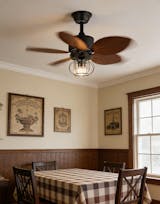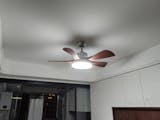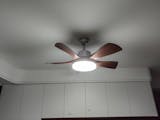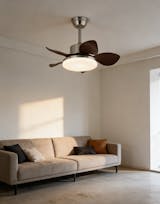Navigation
- Metal as a material in pendant light design
- Wood and other natural materials in pendant light design
- Recycled materials in pendant light design
- Conclusion
As you bask in the warm and inviting glow of your home, have you ever stopped to consider the power of lighting in creating a mood? Pendant lights, in particular, offer a unique opportunity to blend aesthetics with function to elevate the ambiance of any space. The musical dance of light and shadow cast by these fixtures can inspire creativity, evoke emotion, and transport us to another time and place. With so many options available, choosing the perfect pendant light is an art form. From the materials used to the design choices made, each decision impacts the aesthetic, functionality, and longevity of these lights. With numerous common materials available, it becomes apparent that choosing the appropriate one is no small feat. Join us on our exploration through the world of light pendant design to gain insight into the impact of material choice on aesthetics, functionality, durability, and maintenance.
Metal as a material in pendant light design
Metalworks wonder when it comes to crafting modern pendant lights. The versatile material offers both advantages and disadvantages for designers and consumers alike.
On the plus side, metal pendants boast strength and durability. Metals like wrought iron, steel, and aluminum can form sleek, geometric shapes without sagging or warping over time.
Metal pendant lights also provide flexibility due to the array of available finishes. For a painted look, options include brushed nickel, copper, brass, gold, chrome, and even powder coats.
Corrosion resistance further recommends metal since the material withstands humidity and dampness better than wood or plastic. Metal pendants can handle bathroom and outdoor use with little wear.
However, metal fixtures also tend to be heavier weight. Installation may require extra-sturdy attachments and hardware to support the load. Metal may also pose challenges for customization.
Heat buildup represents another limitation since metals conduct heat easily. Certain designs with enclosed shapes can trap heat within, though vents and openings combat this issue.
Glass as a material in pendant light design
Pendant lights come in various materials, and glass is undoubtedly one of the most popular options. With its unique properties, glass offers several advantages and drawbacks for light pendant design.
Advantages:
Range of Color, Texture, and Transparency Options: Glass comes in various shades and textures, including frosted, smoked, or clear, allowing for a vast range of aesthetic choices.
Excellent Light Diffusion: Glass diffuses light evenly throughout the space, creating a warm and welcoming ambiance.
Easy Cleaning: Glass pendants are easily cleaned with traditional methods such as wiping or spraying.
Disadvantages:
Fragility: Glass is prone to breaking, making it unsuitable for areas where there might be vibration or potential breakage.
Difficulty in Shipping and Handling: Glass is a delicate material; therefore, it needs to be handled with care during shipping to prevent breakage.
Susceptibility to Scratches: As a result of its fragile nature, glass can be scratched during handling.
Despite the drawbacks, glass remains an excellent choice for pendant light design. Glass pendants are ideal for modern and contemporary spaces due to their sleek and chic appearance. They bring an interesting play of light and shadow and can add a touch of artistry to any setting.
When shopping for glass pendant lights, remember the different styles, sizes, and shapes available to suit your interior decor preferences. Whether you choose a clear cylindrical shape or a colorful geometric pendant, the glass adds sophistication and elegance to any room.

Wood and other natural materials in pendant light design
Pendant lights not only provide illumination but also serve as artful accents to elevate any space's aesthetic appeal. Wood and other natural materials have become increasingly popular for unique, charming pendant light choices.
Advantages:
Warmth: The organic feel of wood adds warmth and creates a cozy ambiance within a space.
Unique Textures: Wood and other natural materials offer diverse textures that can add interest and depth to pendant light designs.
Versatility: Natural materials are versatile, and pendant lights made from them can come in various shapes and sizes.
Disadvantages:
Susceptibility to Rot, Warping, or Cracking: Wood and other natural materials may develop defects such as rotting, warping, or cracking due to moisture intrusion or environmental factors affecting their durability.
Potential Flammability: Because some natural materials, like bamboo and paper, aren't fireproof and can catch fire easily, their use in some settings is inappropriate. Wood and other natural materials are great options for light pendant design despite their shortcomings. They lend a touch of nature to any situation and give it a certain charm and character.
Consider the various varieties of wood, such as softwood or hardwood, when looking for wooden pendants. Look for wood grain textures and natural tones in the finishes you choose.
Recycled materials in pendant light design
The popularity of eco-friendly design ideas and the demand for sustainable products have both increased along with public awareness of environmental challenges. The same is true of pendant lights. Utilizing recycled materials is one advancement in pendant light design that is making waves.
There are many different types of recycled materials, including glass, plastic, metal, and even paper. Recycled glass has been a popular material choice for pendant light fixtures in particular. It saves raw materials and reduces waste, making it a greener option for new glass.
Benefits:
Eco-Friendly: By using recycled materials, pendant light manufacturers reduce waste output and conserve precious materials.
Aesthetically Pleasing: Recycled glass can add a unique touch of character to your pendant lights with its natural color variations and textures.
Sustainable: Using recycled materials supports a circular economy, where materials can be repurposed and reused instead of discarded.
Challenges:
Availability: The availability of recycled glass might be limited, affecting the consistent supply chain needed for a large-scale production line.
Cost: Though eco-friendly, recycled materials can be more expensive than their non-recycled counterparts, which may affect the price of the product.
Incorporating recycled glass into pendant light fixtures offers a unique element that brings a story to every handmade piece. With a wide array of colors and textures, designers can create pendants tailored to the customer's taste.

Conclusion
In conclusion, choosing the right material for pendant lights is crucial as it affects aesthetics, functionality, durability, and maintenance. Metal and glass offer sleek and modern options, while wood and natural materials bring warmth and character. Innovative designs using recycled materials support eco-friendly initiatives. Each material has unique advantages and disadvantages, so consider your needs and preferences before making a choice.











